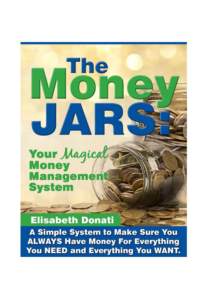I hear people say all the time that the most important thing to teach kids about money is the power of compound interest. But really, that’s not the true picture of why investing works and why our money grows over time. It’s not actually always compound interest that creates wealth…at least not for many investors. It’s actually ‘compound growth’ that causes money to grow in many instances. Let me explain.
Let’s divide this conversation into the three main areas of investments which in our programs we call the Three Pillars of Wealth: business, real estate and the stock market.
Let’s start with BUSINESS. Think about how people profit from owning businesses. The reason they do is many fold:
• The business appreciates in value and is sold for a profit.
• The business is able to be put on autopilot and create passive income.
In these two cases, compound interest has absolutely nothing to do with the wealth a business can create, UNLESS the business is in the business of lending money and charges compound interest on that money. Examples would be banks, credit card companies, private lending companies, mortgage companies. You get the idea.
Next, let’s look at REAL ESTATE. The profit from owning or investing in real estate comes from:
• The property or building appreciates in value and is sold at a profit.
• The property is rented out for more than the expenses on it producing a positive cash flow the owner can live on.
These two methods of making money on real estate have nothing to do with compound interest, UNLESS you’re lending money to someone who is buying the house and you’re changing compound interest on that loan or you’re carrying the paper (playing the bank) on a piece of property you’re selling.
Lastly, let’s look at the STOCK MARKET. Once again, very little profit and wealth that is created in the stock market has anything to do with compound interest. The wealth that is created is because:
• The stock or mutual fund you’re invested in grows in value because the cost of the stock or mutual fund (NAV in case of the mutual fund) goes up and you sell it at a profit (or vice verson because you are selling short…more on that later)
• The dividends you may be receiving from the stock or mutual fund are ‘reinvested’ in more of the same stock or mutual fund providing a compounding effect, but it’s not interest per se.
Bonds are another type of investment where the money you make can be interest, but it’s not always interest that makes you money when investing in bonds. Confused? That’s OK, so was I when I first learned about bonds. Much of the actual profit made on bonds is due to people buying and selling the actual bonds as the cost of those bonds goes up or down, just like the price of a stock goes up and down. Still, if you’re the holder of a bond, you do make interest on the bond itself.
So, is it important that kids of all ages learn about compound interest? Absolutely AND it must also be combined with the idea that the power of money to grow over time is called Compound Growth. The definition of compound growth is “a measure of how much something grows per year, over a multiple-year period, after considering the effects of compoundING.
An extension of this topic, if your child is old enough and ready for it, is the conversation about ‘return on investment’ and ‘rate of return.’ I have asked many experts if these two phrases mean the same thing and I always get a mix of answers; some say yes and some say no. Most say that ROI is the actual bag of cash returned from an investment and ROR is the measured rate, expressed in a %, at which the investment returned a profit.
The general question is simply, “How much money has my money made over time and how do you turn that into a percentage rate per year?” According to Wikipedia, the ROI or ROR is the RATIO of money gained or lost on an investment where the money invested is referred to as the asset, capital, principal or cost basis of the investment. To figure your ROI or ROR you simply…
Divide the amount of money you made by the total investment made. Example: Let’s say you invest $50,000 and a year later you get back $60,000. Your profit is $10,000 (not factoring in any taxes or other fees).
Your RETURN = $10,000/$50,000 or 20%. Pretty straight forward, yes? And remember, rates of return are usually quoted per year, but not always. What if you have an investment that pays you 30% every six months? Well, is that a total of 60% per year? Maybe, maybe not. In order to get a total return for a year, you have to do the math based on the figures for the year. It makes sense that it would be 60% but sometimes it just doesn’t turn out that way.
Now for some cold hard facts about actual compound interest that we share with our attendees to Camp Millionaire and Creative Wealth for Women.
CREDIT CARDS: Let’s say you buy a new stereo for $1000. You put it on a credit card that charges 19% interest per year. You only pay the minimum payment on this card. Ready for the shock?
It took you 19.3 years to pay it off and you ended up paying $2930.00 for it!!!
YOUR MORTGAGE: Let’s say you buy a house for $300,000. You borrow $250,000 from the bank at 6% interest and it’s a 30 year loan. Do you have any idea how much that house cost you? Are you sitting down? $539,596.80!!! You paid more interest on the loan that you originally borrowed.
Should you never buy a house then? No, but you should consult your accountant to find out if it’s the right thing to do financially. We teach our campers to buy rental properties first and then buy the house they live in with the passive income from their rentals. Put your money to work for you first!
OK, that’s all for today in terms of this compound interest concept. Just remember that isn’t not always compound ‘interest’ that is making your money grow…sometimes it’s compound growth based on appreciation, cash flow, profits, rents, dividend reinvestment, and more.
If someone sent you this article and you’d like to read more interesting tips, trick and philosophy on money and life, sign up today for Elisabeth’s FREE Weekly E-Zine, Financial Wisdom with a Twist and FREE monthly teleseminars at UltimateAllowanceBook.com.




0 Comments